It’s all in the Details
Given some skill, their own space and a little time it is wonderful to see year 9 boys so engrossed in an activity (to the point that none of us heard the bell, working on into our morning tea).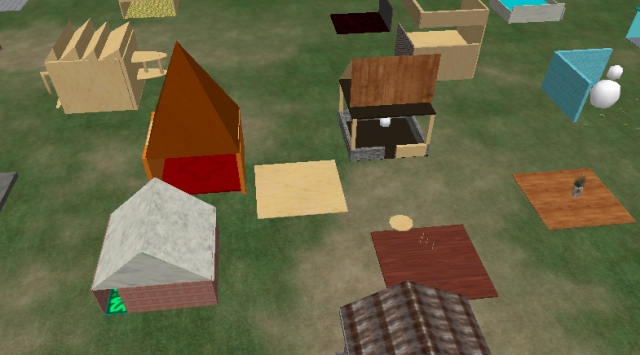 Building in the ‘Burbs
Building in the ‘Burbs
The brief was simple: Make something that looks like something, keep the scale avatar-size and make it as detailed as you have time for.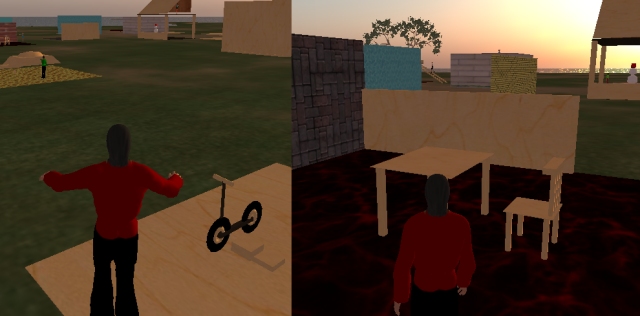
The results were, well, quite wonderful as you can see. Some went the conventional “follow the neighbour” which is quite natural in a free-form activity – creativity coalesces between near neighbours and they are surprised when you point it out to them because they are sure they are being creative and not derivative.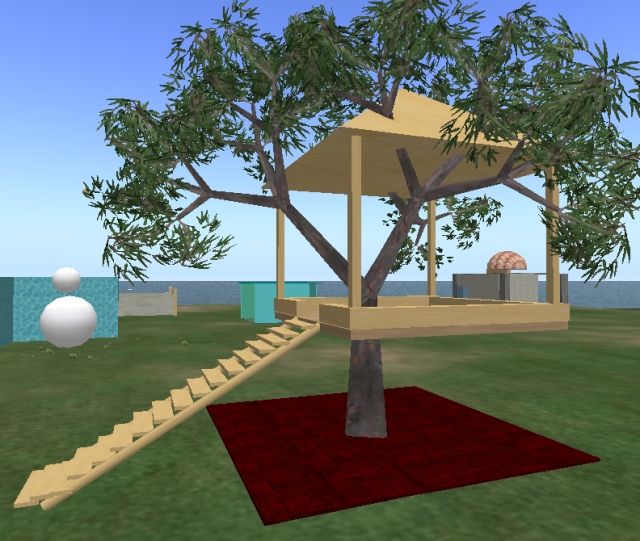
Some lovely ideas expressed, including the practicalities of access, movement and texture. It will be interesting to see how this activity changes with a pair of classes, driven by different teachers next time.
Marking Your Territory
Teaching basic building skills in an OpenSim is fairly straight forward, I have found the kids take to it fairly fast but few think through a quality build first time. Pride in workmanship comes after mastery of the tools I am hoping.
The activity was simple and open-ended – on a designated section of the continent make a slab 10m x 10m x 20cm, nestle it into the ground slightly to become your building “plot”.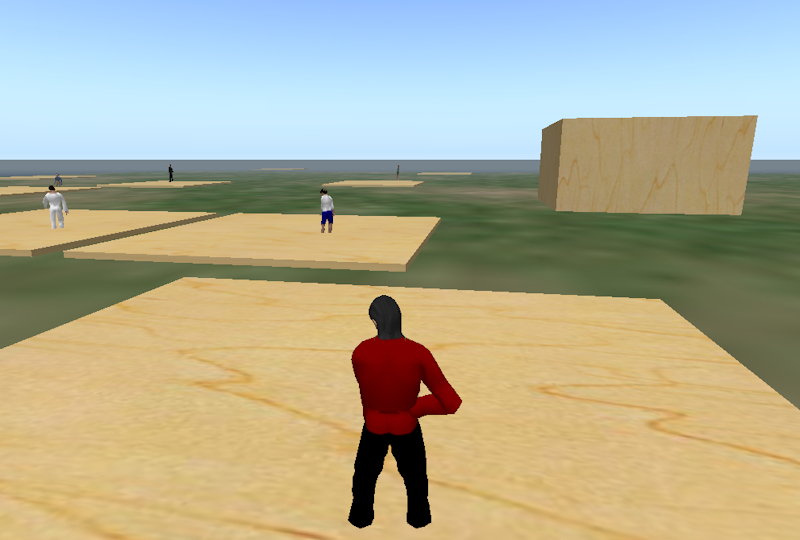
Object creation, scaling and movement skills followed texturing, exploration of other object properties and then a simple brief: make something that looks like something. the only caveat was that it needed to be on their plot, and to scale.
They took to the task with great enthusiasm, exploring the way you construct more complex things from primitives, scaling, rotating, moving with greater and greater precision that comes with experience.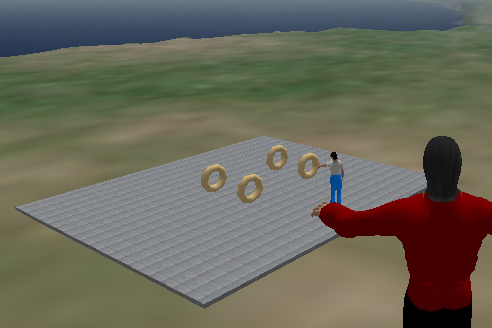
In the end they were inviting their iMates over to have a look, all fairly hoopy. We have, in the next journey into this world, to tie this world activity to the activity happening in MUD and MOO and then look objectively at the whole “amount of activity required to create a unit of believable detail”, but for now, play is a good thing.
Building is the Pits
Trying to scoffold an activity so it fits into a short term means that certain details must be surfaced, processes prepared and scaffolds erected. The “builders academy” is a summary of the tutorial zone on planet Obscura and focusses on skills particular to this building task: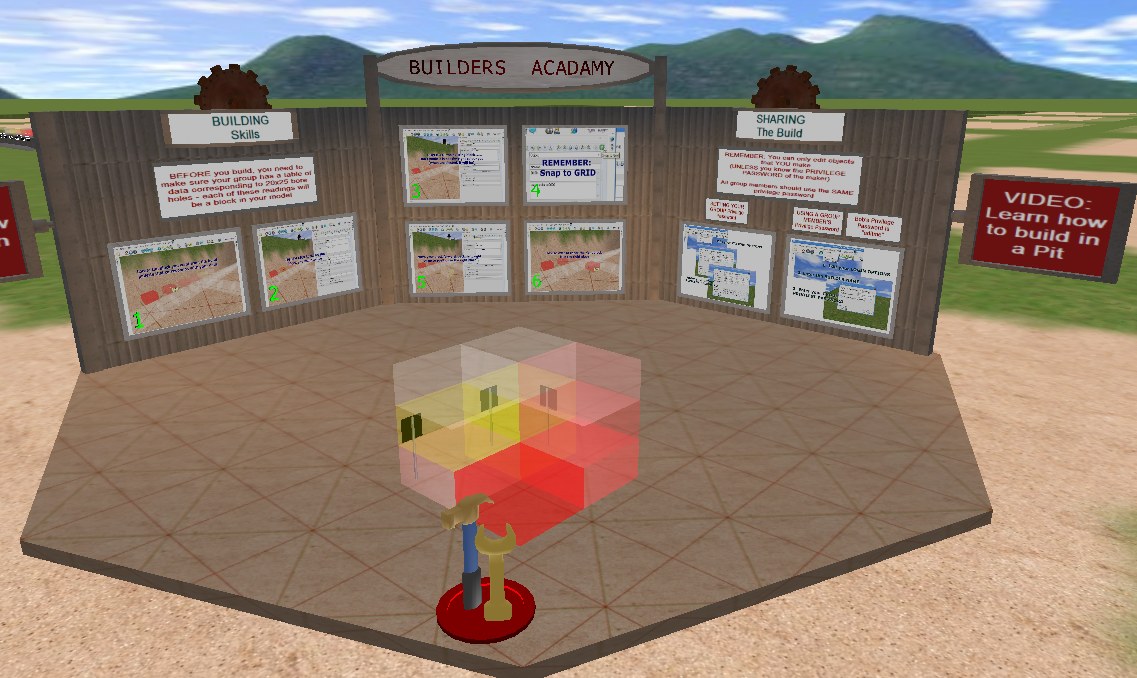
I made a machinema demonstrating techniques, and talking them through more regular tidy building practises, in the hope that if they do not want to read the worded instructions, they might take notice of a human voice modelling what they have to do. I am getting quite good at “multi-modal” explanations, and this is something that Virtual Worlds are particularly good for.
The idea is that cybernauts model, in 3D the readings they have taken in the field. The modelling then creates a 3D representation of the ore body in situ so they can then decide, based on researched costs and benefits, the most appropriate way to extract the ore.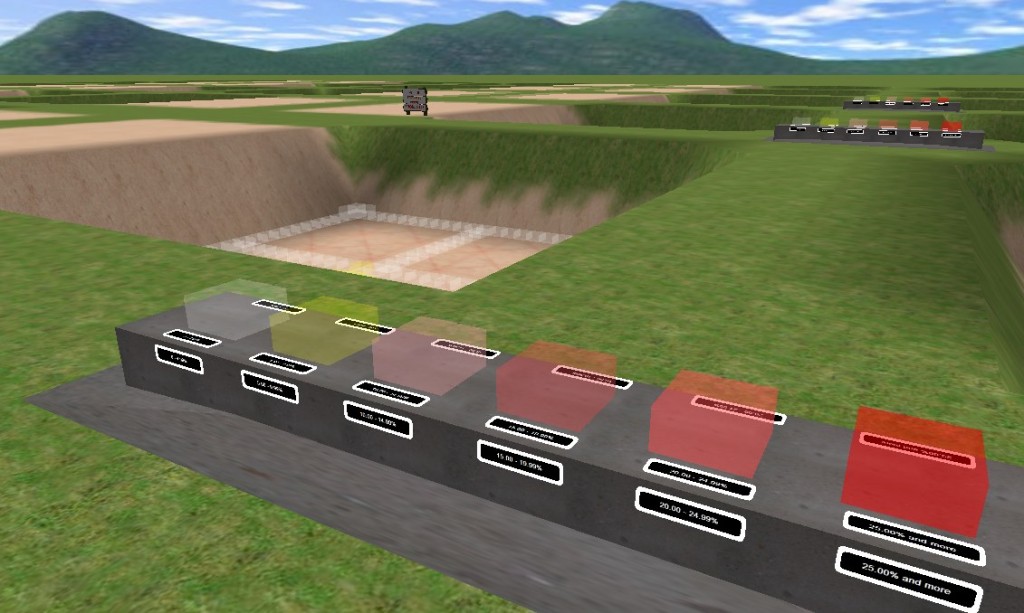 We present them with a “builders pallette” of the objects they need to complete the build – in this instance they are semi-transparent blocks that stack neatly, each representing different mineralisation readings. You can also see in the pit there is a starter grid, centred on the ore body, so they can start building from there without having to worry about aligning, scale and have an idea of extent and scope. Each pit has a “spoils” area to one side, so that later when they are demonstrating the mining technique they have selected, tehr eis somewhere to put their mined waste – again a nice demonstration of the fact that the stuff you dig up and discard has to go somewhere.
We present them with a “builders pallette” of the objects they need to complete the build – in this instance they are semi-transparent blocks that stack neatly, each representing different mineralisation readings. You can also see in the pit there is a starter grid, centred on the ore body, so they can start building from there without having to worry about aligning, scale and have an idea of extent and scope. Each pit has a “spoils” area to one side, so that later when they are demonstrating the mining technique they have selected, tehr eis somewhere to put their mined waste – again a nice demonstration of the fact that the stuff you dig up and discard has to go somewhere.
Most 3D worlds have limits, Activeworlds more than most in some regards, but I learned some valuable lessons in highly intensive, densely packed object arrays by trying to complete the activity we are asking the cybernauts to do, myself.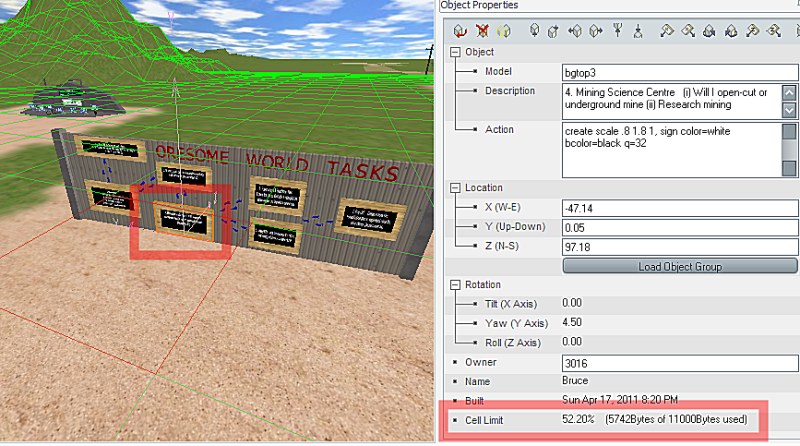
There is this thing called a “cell limit”, it is a PHYSICAL MEMORY limit the world, and I am guessing the rendering engine have whereby the total assets for a grid cell are limited. Each object instance, the NAME of the object, any ACTION scripting applied and any DESCRIPTION add to the storage requirements for that object. In the above screenshot you can see a rather sparse area of the world and a highlighted object alerts us to the fact that we have consumed 52% of the cell limit in that cell (you can see the cell grid in green and the current cell in red). This large cell usage can be explained when you realise there are 135 objects in that cell, most with HUGE names, most with create scripts etc.
This became a critical problem when I was testing the pit construction. Originally I had the blocks with lovely long names, and create scripts and a lovely long description in each – this meant that when I was 2/3 of the way through the building of my model, the WORLD prevented me from building any more in that cell … oops.
The solution was a re-making of ALL blocks (I changed the actual objects to be coloured and transparent in my 3D modelling program rather than do it with scripts in-world), gave them all tiny names (m1 .. m7) and pruned their descriptions down. the upshot of this is that I realise the object catalog that exists currently contains some obscenely wasteful object data – sure the names are descriptive but …
I like it that I am still learning in this project.
Meet, Greet and Orient
After the first cybernauts entered the world, it was clear that they did not have basic world skills, so I grafted an orientation zone (modified from Scientia) with things like how to move, fly, placemark, manage config etc.
We will be hosting meetings with experts – hopefully a balanced collection of mineral scientists, environmentalists and mining industry representatives – we needed a venue, so I built a sunken forum – quite like the roofline.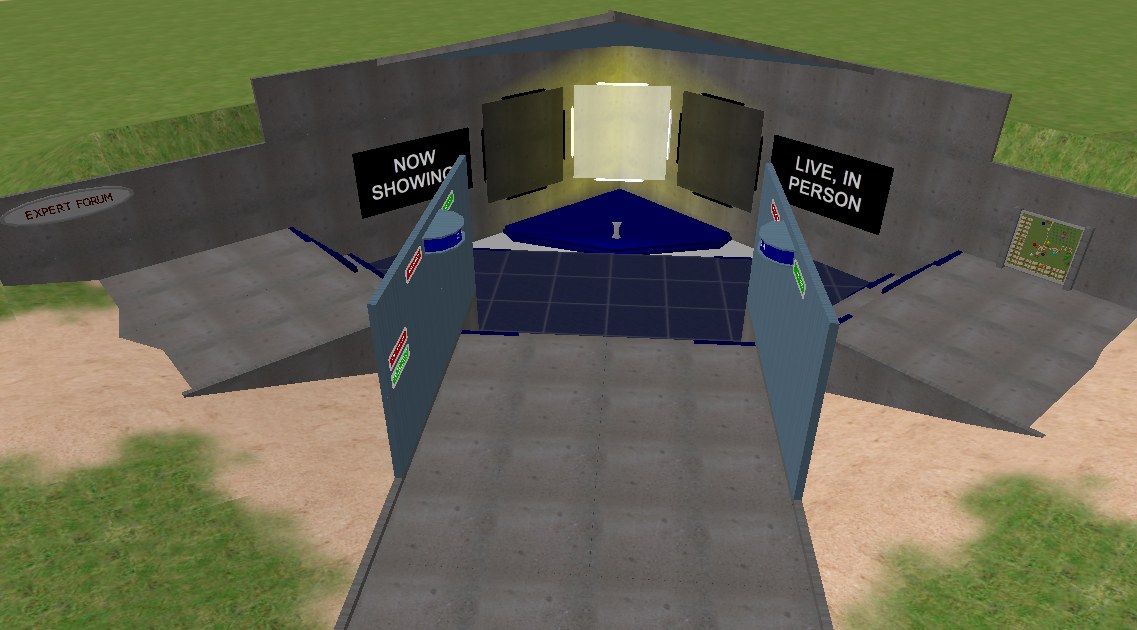
I incorporated a Q&A wall into the structure, so cybernauts could post questions for the visiting experts to answer – this form of Q&A has been successful in the past.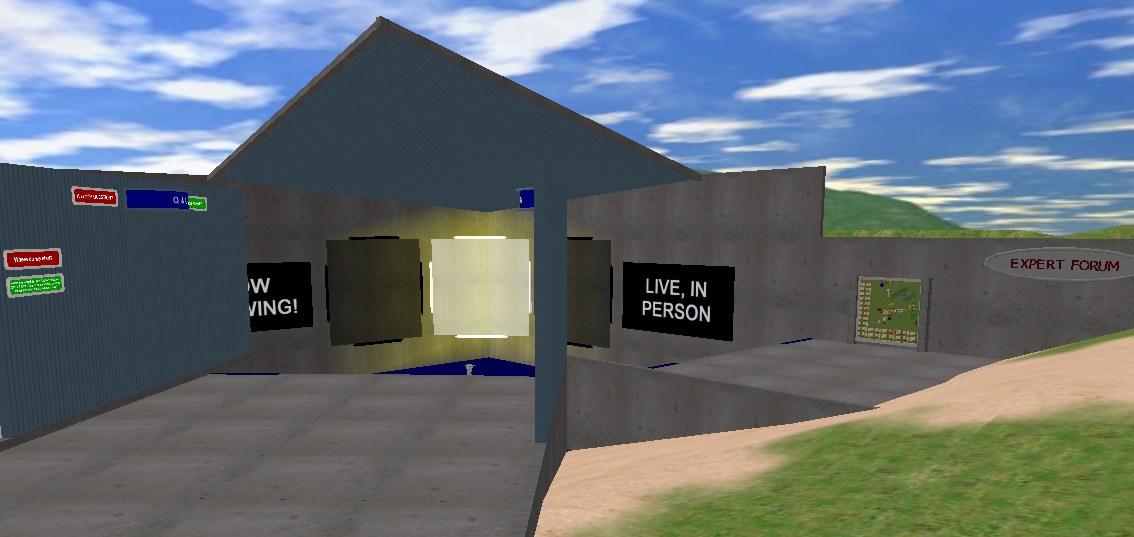
The forum is tiered – do not think I will bother with seats – avatars can stand overlooking a lit stage, view picture and sign displays etc, think it will suit the purpose well.
Mineral Exploration
Cybernauts explore a mineral deposit via aerial survey, surface sample, and core samples, collecting data and observations, they need somewhere to research and conextualise these: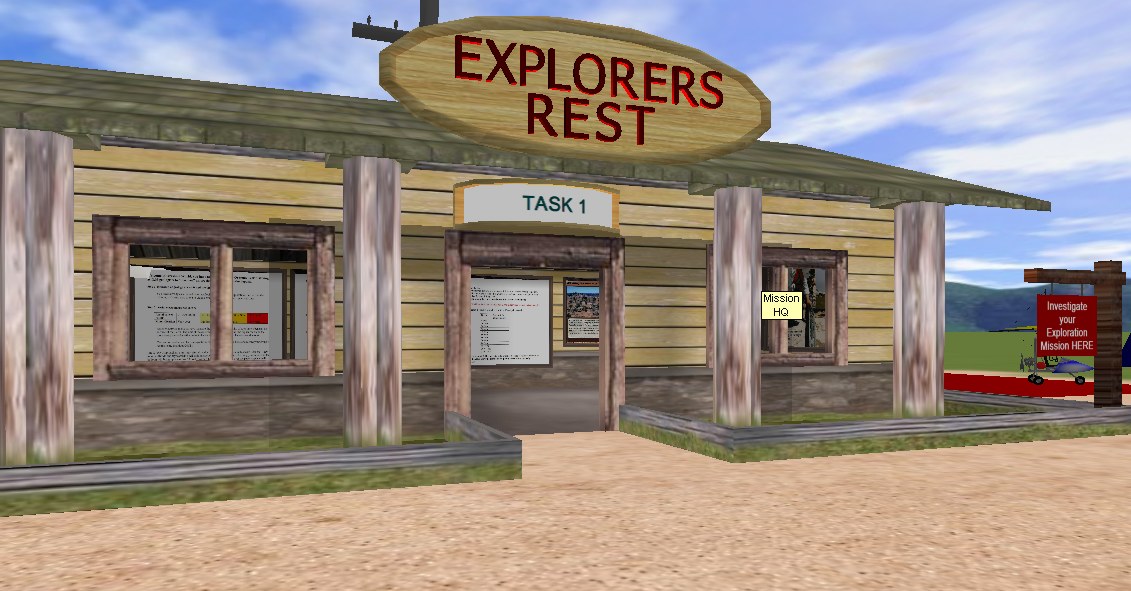
Interactives and static displays of rock types, classification, geological processes and explicit references to activities they must perform provide some nifty scaffolding for the task.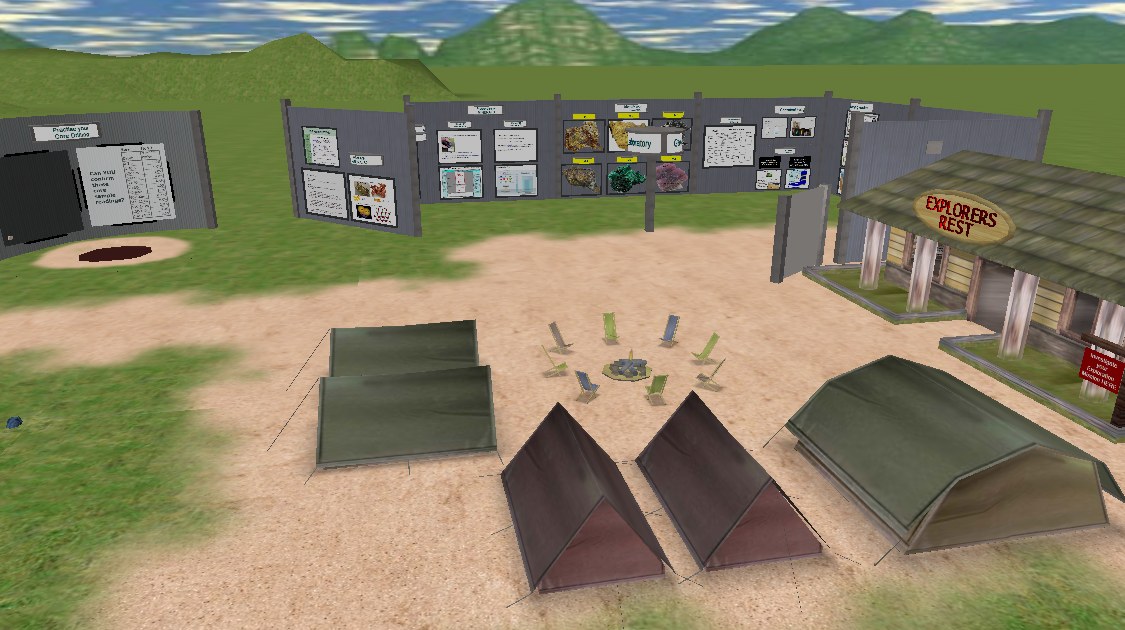
I went for a camp – feel, to give cybernauts an appreciation for the fact that often fieldwork requires this. Included is a camp-fire talk circle where they can meet privately in groups, sample tasks and a video tut on how to perform key actions – think it makes sense – we shall soon see.